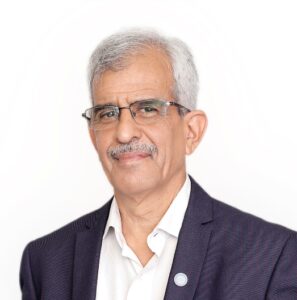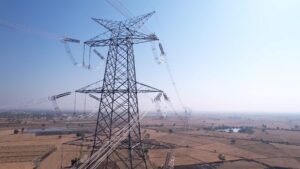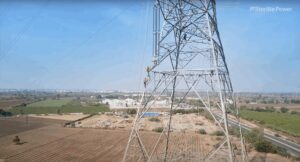Formed in 2012, Electrical Power Transmission Association (EPTA) strives towards safeguarding the interests of Indian private transmission companies, and further the goal of a robust power transmission sector. In this exclusive interview, we have I.S. Chaturvedi, Director General, EPTA, speaking to Venugopal Pillai about EPTA’s activities and important matters on the association’s agenda. Discussing critical policy-related issues, I.S. Chaturvedi firmly believes that while tariff-based competitive bidding (TBCB) is a commendable method for developer selection, the practice of e-reverse auction (e-RA) can indeed be dispensed with.

What was the main objective in forming EPTA?
Electric Power Transmission Association (EPTA) was established for transmission sector advocacy in 2012. Such advocacy is important for building a strong and robust transmission sector in the country, particularly because an increasing number of projects are being awarded to private companies that are members of EPTA, in view of the government’s target of achieving 500 GW of non-fossil fuel installed capacity by 2030.
We don’t raise issues if they are of commercial interest to only a limited number of members. We raise issues that are in the interest of the sector as a whole; issues that are important for developing a strong power transmission sector.
What is the current membership of EPTA?
Most of the important companies in the private sector – Adani Energy, GR Infraprojects, Apraava Energy,Sterlite Power, Renew, Sekura, IndiGrid— are members. These companies are developing, operating and maintaining power transmission projects that have mostly been awarded via the TBCB route.
What about Power Grid Corporation of India Ltd, though it is a public sector entity?
PGCIL is not a member. Perhaps, PGCIL does not need the support of an association as much as private companies do.
It is observed that some private sector players are exiting the development space, and returning to their core business of EPC contracting. What is your view?
I am not sure what is driving this change. However, I think we have a sufficient number of private sector companies of adequate size taking care of the power transmission development space,. I don’t think this will be an issue in future also considering the tremendous growth potential in the power transmission sector. However, the issues facing the sector also need to be addressed expeditiously to avoid negative consequences in this regard.
Coming back to EPTA membership, is Tata Power a member given that it has been actively bidding and close to winning TBCB projects?
We are in talks with Tata Power and the company has expressed interest in acquiring membership of EPTA. We hope Tata Power will soon be a member.
There is a view that even after TBCB has come into force, PGCIL is getting a number of projects on RTM basis. What are your thoughts?
 The Tariff Policy specifies the reasons for which projects can be awarded via the RTM route –;projects of strategic importance, technical upgradation etc.; or works required to be done to cater to an urgent situation PGCIL has been awarded almost all projects that have been awarded via the RTM route. In RTM projects, there is a fixed return on equity as determined by the appropriate commission.
The Tariff Policy specifies the reasons for which projects can be awarded via the RTM route –;projects of strategic importance, technical upgradation etc.; or works required to be done to cater to an urgent situation PGCIL has been awarded almost all projects that have been awarded via the RTM route. In RTM projects, there is a fixed return on equity as determined by the appropriate commission.
The perception in the private sector is that PGCIL is using its financial muscle to win projects awarded via the TBCB route. Tariffs quoted by PGCIL for TBCB projects are lower compared to the projects they have been awarded via the RTM route. . The private sector also feels that PGCIL can possibly use the resources available for its RTM projects for implementation of its TBCB projects. This cross-subsidization could also lead to the lowering of tariffs. These are perceptions that need to be looked into and taken care of so that there is more transparency leading to greater confidence amongst transmission developers and investors.
If their profits are squeezed too much, private companies will naturally be muscled out of competition. The argument of the power ministry perhaps is that there are very few projects where PGCIL’s bid is the lowest at the first stage and there is no e-Reverse Auction (e-RA). So if there is bidding by private companies in the e-RA, an inference can be drawn that they are willing to match the tariff quoted by PGCIL because it is not so low as too make the project unviable.
Private companies on the other hand argue that if they have to survive they must submit bids bid and get projects. One must address these perceptions.
We have seen that the e-RA sometimes witnesses aggressive bidding with a big difference between initial price bids and the final winning bids.
I will give you the example of wind projects. The complaint of the private sector developers was that because of e-RA, tariffs were quoted artificially low. As a result, projects were getting stalled. So there was this situation, where there was demand for wind energy but projects were not getting completed. And this was an issue that was raised for a couple of years if not more, very strongly, by wind companies. Finally, the government decided to have state-specific bids without e-RA.
I understand that power is the only infrastructure sector where e-RA exists. This is an important point. The second point is that in a strategic project, can you afford to have a dispensation that might possibly result in an artificial low tariff, making the project unviable in the long run? These are the two arguments against e-RA.
The argument for e-RA perhaps is that there is no evidence where tariffs quoted have been artificially low. And I have touched upon this in the answer to an earlier question.
All said, at the minimum, there is a need for more analysis by the Power Ministry. One can perhaps look at the international best practice in this regard.
All in all, after taking all relevant factors into consideration, EPTA’s clear view on this issue is that there is no need for e-RA in the award of transmission projects.
Do you feel that the TBCB modality for power transmission can be availed gainfully for intrastate projects?
 Yes, it will be good for the sector if state utilities also award their (intrastate) projects on a competitive basis. There is some guidance available on this issue.
Yes, it will be good for the sector if state utilities also award their (intrastate) projects on a competitive basis. There is some guidance available on this issue.
The Tariff Policy states that above a certain threshold power transmission projects should be awarded on competitive basis. This threshold should be fixed by the State Electricity Regulatory Commissions (SERCs). There is also a Supreme Court order of 2022 requiring SERCs to fix guidelines for award of TBCB projects.
So far, a total of 13 states have notified the threshold .Thus, there is indeed movement towards TBCB with respect to intrastate transmission projects.
Has the TBCB culture improved project implementation efficiency with respect to project costs, gestation period, etc?
If you have projects via the nomination route, the return on equity is guaranteed. In such a situation, one can possibly be complacent in implementation. On the other hand, if you have competition, you are on your toes. It certainly affects the tariff and ultimately the price that consumers pay for electricity. So, TBCB is the right modality to adopt.
But then, efficiency should not be tested too much also. Tariffs that are artificially low can also be a problem.
How do you see opportunities for Indian developers in the international markets?
India has one of the largest synchronous power grids. There is considerable experience expertise both in the public and private sector in implementing transmission projects. This experience and expertise can be used for implementing transmission projects in countries which do not have this sort of capabilities.
But there is a case for two-way learning also. We can learn from other countries, particularlyin dealing with difficult issues like the e-RA.
On a slightly different note, we have done very well in PPP projects in a number of sectors. In RE projects, the story is particularly impressive, with the private sector building strong capabilities over the years. Such capabilities can be used to implement projects abroad.
What is your overall take on the emerging role of renewable energy (RE) in India’s power sector?
India’s achievements in RE are extraordinarily impressive. We are well on track to fulfil our updated Nationally Determined Contribution of about 50 per cent cumulative electric power installed capacity from non-fossil fuel-based energy resources by 2030. That said, we should be also be ready to meet the challenges that lie ahead, for example the issue of grid integration and the costs of storage. I think if necessary we should be willing to pay higher prices for RE given the importance of the cause.
What are currently the pressing matters on hand at EPTA?
 Power transmission projects are commercial projects that need to be implemented in time. There are ease-of-doing-business issues that arise and are taken up periodically with the relevant authorities by EPTA. Then there are bigger issues like separation of CTU from PGCIL and e-reverse auction.
Power transmission projects are commercial projects that need to be implemented in time. There are ease-of-doing-business issues that arise and are taken up periodically with the relevant authorities by EPTA. Then there are bigger issues like separation of CTU from PGCIL and e-reverse auction.
EPTA has given detailed suggestions on the model transmission service agreement (TSA), particularly to tackle cases where there is delay in project commissioning. There are also technical matters related to survey reports which EPTA has taken up. Further, there are other issues like how to deal with situations where transmission infrastructure is getting affected because of changing wind patterns or changes in the course of rivers.
All issues are important though some are more critical for the health of the transmission sector. With several projects being implemented concurrently, there could be constraints on the supply side, on availability of equipment like transformers.
The clearance process for interstate transmission projects has been decentralized with some autonomy now given to CTUIL and National Committee on Transmission (NCT). What is your take?
The government’s effort to eliminate unnecessary layers in decision making is a welcome move. When layers are eliminated, the overall decision making process is bound to become smoother and faster.
Do you advocate for separation of STU from state government transmission companies, on the lines of PGCIL and CTUIL, so that they also function as pure transmission service providers?
I haven’t thought through this but as a general remark, separation of entities with distinct specific business objectives is a welcome move. For instance, the separation of erstwhile state electricity boards into dedicated entities for generation, transmission, and distribution respectively has had a positive effect.
As DG of EPTA, what would be key items in your current agenda?
There are big-ticket issues like that of to e-RA and separation of CTUIL from PGCIL. Then, there are gaps in the TSA that need to be addressed. When a TSP is implementing a project and needs to coordinate with an existing licensee, the obligations of the two entities need to be spelled out more clearly. There are a number of issues that affect project implementation. The legal framework determining the contracts and the contracts, per se, should be robust and should take care of the interests of all parties concerned. This is the larger concern because of which issues keep arising. It is particularly important that issues related to RoW are addressed. At present, it is difficult for transmission companies to factor in realistic compensation for RoW. This is an extremely important matter that needs to be resolved innovatively. EPTA tries to raise with the authorities issues that are in the interest of the power transmission sector as a whole, and which can contribute to the sector’s overall development.
Project photographs seen in the interview have been sourced from Sterlite Power, and are for representation only.


